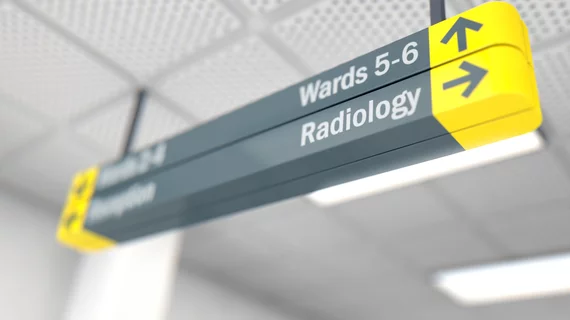Radiology’s share of bone marrow biopsy market surges by 262%, with room for further growth
Radiologists have gained a sizeable share of the bone marrow biopsy market in recent years at a time when year-over-year volume has remained stagnant. Yet, imaging’s total share of the pie is still relatively low, presenting opportunity for further practice growth.
Experts from several institutions recently highlighted this trend in a new analysis published March 3 in the Journal of the American College of Radiology. Sifting through years worth of Medicare data, they noted that between 2005 and 2016, the specialty’s delivery of this procedure surged by more than 262%.
Yet, radiology’s market share stood at just 16% in the last year of the study, administering about 1,800 of the more than 11,000 Medicare procedures, authors noted.
“Radiology has experienced the greatest rate of growth in this time period and now represents the third-largest individual specialty providing this service,” noted lead author Osman Ahmed, MD, with the University of Chicago’s Division of Interventional Radiology, and colleagues at five other institutions. “Given the potential safety with the use of image guidance and patient comfort under moderate sedation, radiology may continue to increase market share in the future,” they added later.
Bone marrow biopsy and aspiration is a key diagnostic procedure used to evaluate blood disorders. It was once considered a bedside practice often performed by hematologists or others, but surgeons and radiologists have increasingly entered into this space in the past decade. In the latter’s case, imaging can be used to aid the process of obtaining marrow samples, with the benefit of reducing complications, particularly in challenging patient populations. Interventional radiology suites are also well-equipped to administer the procedure, Ahmed wrote.
Analyzing Medicare Part B claims data, researchers found that the market share for typical providers of these biopsies—including internal medicine, hematology and oncology—dipped from 60% to about 37% during the study period. Meanwhile, surgery and radiology (including interventional, diagnostic and nuclear medicine) were the biggest gainers. Radiologists, in particular, went from 506 biopsies up to 1,836 by 2016, at an annual growth rate of more than 12%.
These procedures have been around since the 1900s and standardized over the years. However, sedation and pain management are still up in the air, and there is certainly a role cut out for radiologists, the team wrote. Typically performed in outpatient or clinic settings using local anesthetic, image guidance allows for IV sedation, with “quick and accurate” needle placement and reduction of procedure times for patients who are obese or present other clinical challenges.
“The interventional approach to BMB provides the advantage of image guidance and moderate sedation, which potentially improve procedure safety and patient comfort for challenging patient populations,” the study concluded. “With increased awareness and reliance on image guidance for minor procedures, the findings support this claim for BMB offered by radiologists.

